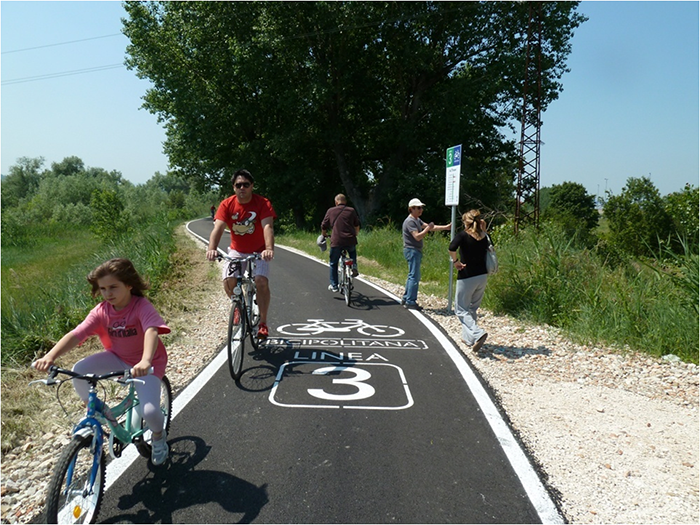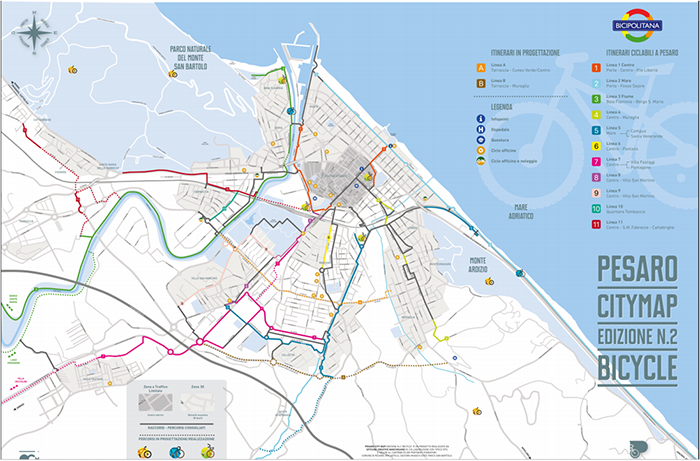Creating systematic changes to enhance sustainable mobility
Transport is one of the sectors most responsible for greenhouse gas emissions in Europe and the world. For many cities, sustainable mobility policies are one of the main drivers used to drastically reduce pollution and emissions. This is confirmed by data voluntarily disclosed by Italian cities through the CDP – ICLEI Unified Reporting System and demonstrated in CDP’s recent Italy Report.
The most common actions undertaken by cities are the promotion of public transport over private cars, the incentivization of electric cars, the development of car sharing systems, and the replacement of buses and cars owned by the administration with electric vehicles. However, in order to be effective, sustainable mobility policies should go above and beyond single actions, instead pursuing systemic changes aimed at reducing fossil fuel car use and integrating these into the urban plans of cities and engaging citizens to build support. The “Bicipolitana” project carried out by the Municipality of Pesaro is an example of how this can be delivered.
Located in central Italy’s Marche Region, Pesaro is a municipality of almost 100,000 inhabitants and the second most heavily populated in the region. Already placed 6th among 104 main municipalities in Italy in the ranking of green cities in the country by Legambiente, a well-established Italian non-for-profit organization in the environmental sector, Pesaro has cemented the Bicipolitana project as one of its pillars of urban sustainability.

In 2019, the Municipality's cycle path was about 90 km long. Inspired by the great subway networks of European capitals, the project was approved by Pesaro’s City Council in 2005 and launched in 2011. Informed by the frequent and ever increasing use of bicycles in the city over time, the project not only sought to create new cycle paths, but also to make the most of roads already used by cyclists from Pesaro and to build necessary links between existing routes to create an integrated bike system. Today, several "lines" of the Bicipolitana, which are mapped by number and color, cross and connect the main junctions and attractions of the city: the red line runs along the sea and is the main access route to the seaside resorts of the city in the summer, the yellow line follows the ancient walls of the historic center, while the green line runs along the river Foglia.
Thomas Flenghi, mobility manager of Pesarodescribes the project as based on 3 main and intersecting factors: the realization of cycle paths and areas where the maximum speed is limited to 30 km per hour, clear and simple communication and signage, and a promotion campaign able to involve all potential bike users.
The result is that today, about 1 in 3 citizens of Pesaro use bicycles for their journeys to work or study and bicycles currently represent 28% of urban mobility. The cycle paths are no longer only "bicycle roads", they have also become the means to tell a story about the city’s climate action and invite tourism. The promotion of bike use must be supported with infrastructure and community initiatives, which is why the city offers cycle parking, bike sharing, bike hotels, and an emergency bicycle repair service. The Municipality has also developed informational material, such as brochures and maps of existing bike lines and guidance on the correct use of bicycles.

In other words, the Bicipolitana project has led to a comprehensive rethinking of the urban environment of the city. Different solutions have been adopted by Pesaro to adapt to different situations, from the creation of cycle paths on a riverbank that has been restored and made safe and the resizing of parking lots, to the total closure of some areas to traffic.
The potential of projects like the Bicipolitana to reduce greenhouse gas emissions and contribute to improved public health and well-being is significant. Many smaller neighboring cities are now following Pesaro’s lead, and are themselves developing ambitious projects to make their cities more cycle friendly.
